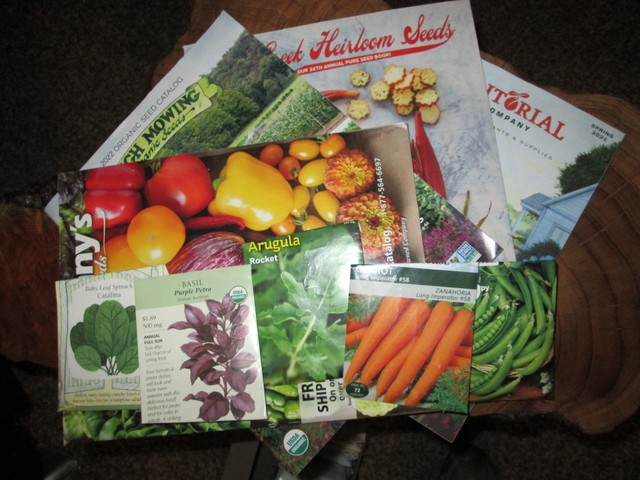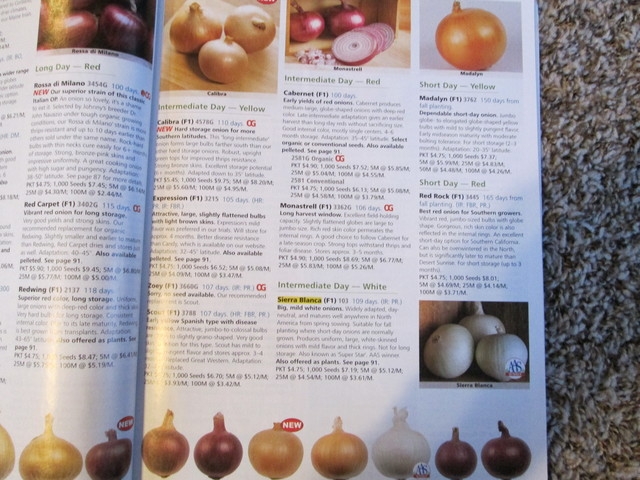Here they come! Gardening catalogs are appearing in our mailboxes fast, so rather than immediately tossing them into the recycling, why not take the time to open them and learn from them by studying the wealth of information that many of them contain?
Reading the information carefully may well prevent wasting time, money, and effort in attempting to grow plants that are destined to failure because an inappropriate choice has been made. There is little point in planting 200 Walla Walla onions because you have seen them in the local supermarket and it is a name that you recognize, when in fact they often do not bulb well at our latitude (37.36° in Bishop), nor do they store well.
Falling in love with the description of a tomato variety that has been specially bred for cool climates may give you a very poor yield in the desert. If your tomatoes have been afflicted by blights, viruses or any other identifiable diseases you may be able to find varieties that are resistant to these clearly labeled. Likewise, if root knot nematodes have got a hold in your soil, there are various vegetables that are resistant to that problem.
Good seed and plant catalogs contain an almost encyclopedic amount of knowledge regarding their offerings, while other, less than helpful ones with glowing descriptions of enormous vegetables or spectacular flowers contain scant amounts of horticultural information about even the basic growing requirements.
Of course there is a long tradition of seed catalogs describing plants' characteristics with particularly optimistic language; however, most reputable seed companies want you to succeed with their plants, so they give as much detail as space allows on how to provide the best possible conditions for each plant.
The best catalogs will also mention any problems with a variety, such as being susceptible to rotting or not being reliably hardy, or even that they have low yields. Most catalogs use abbreviations and the key to these will be explained somewhere in the text, but a useful overview can be found at: https://s3.wp.wsu.edu/uploads/sites/2086/2014/05/howtoreadseedcatalog1.pdf
Perusing the “Onion” section of one of my current catalogs, I learn the following about Allium cepa:
- Type and pH of the soil, sun exposure needs, whether to direct seed or start indoors, what time of year to transplant, how far apart to space them and how deeply to plant.
- Water requirements both during growing and bulbing.
- Days to maturity for both direct sown and transplanted specimens.
- Diseases associated with them.
- How to store and how long they will store in ideal conditions
- The importance of daylight length in growing different types of onions.
- Then there is a key to various abbreviations used for disease susceptibility eg HR= highly resistant and then the diseases (BO for Botrytis), (DM for Downy Mildew) etc.
- There is a graph showing how long germination will take at different soil temperatures.
- There is then a photograph of all the onions on offer side by side for comparison
- The onions are categorized by daylight length – Long day (not suitable for southern gardens), short day or, Intermediate day, and then further broken down into color – white, red, or yellow.
- Each variety is then described separately as to the latitude at which they will grow, days to maturity, size, yield, flavor and pungency, storage capability and disease resistance, etc.
All other vegetables are treated similarly - from beans to watermelons, as well as herbs, cover crops and cut flowers!
Some of us enjoy the challenge of experimenting - pushing the boundaries of growing, or trying plants new to the area and with the information provided we can go into these projects with our eyes open, knowing what problems are likely to occur.
Of course we will still get carried away by the photograph of some magnificent specimen in a catalog and find that we cannot resist trying it - surely curiosity is one of the most important qualities of a gardener!


